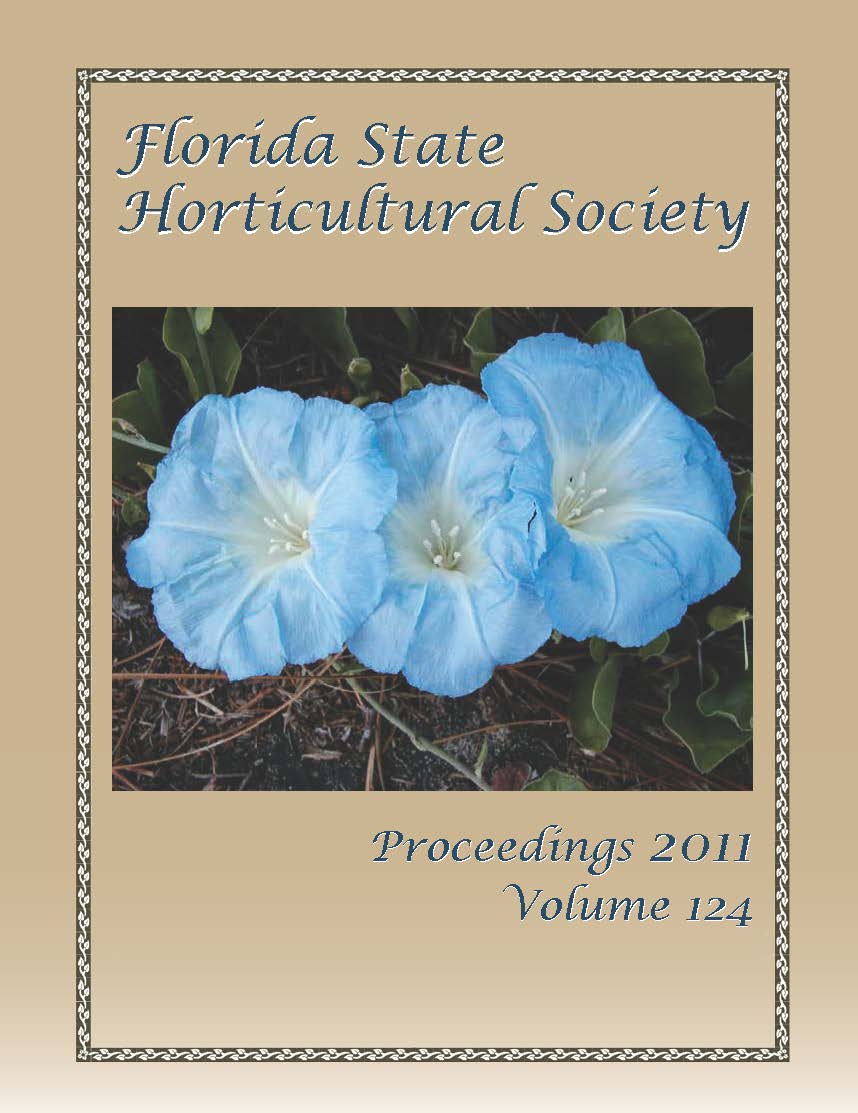Efficacy of Programs of Experimental and Registered Miticides for Twospotted Spider Mite [Tetranychus urticaeKoch (Acari: Tetranychidae)] Management on Strawberry
Published 2011-12-01
Keywords
- Fragaria×ananassa,
- biological miticides,
- biological insecticides,
- insecticides
Abstract
New and existing miticides were applied in various frequencies, concentrations, and combinations to control twospotted spider mites [Tetranychus urticaeKoch (Acari: Tetranychidae)] in strawberry (Fragaria ×ananassaDuchesne) fields during winter 2010 and 2011. Experimental materials included formulations of the fungus-derived material Paecilomyces fumosoroseusApopka strain 97, the bacteria-derived materials Chromobacterium subtsugaeand Burkholderiasp. strain A396 and materials derived from traditional chemistry cyflumetofen, fenpyroximate (a new formulation), and abamectin (biologically derived) formulated with thiamethoxam. Registered materials included abamectin, abamectin formulated with bifenthrin, bifenazate, fenpyroximate, hexythiazox, and spiromesifen. Programs involving the biologically derived materials, excluding abamectin, formulated alone generally were less effective than other programs. Programs of some experimental and registered materials controlled twospotted spider mites effectively. With these successful chemistries available and given other chemistries available and the predatory mite biological control option, limitations in strawberry production due to spider mites should not occur.

